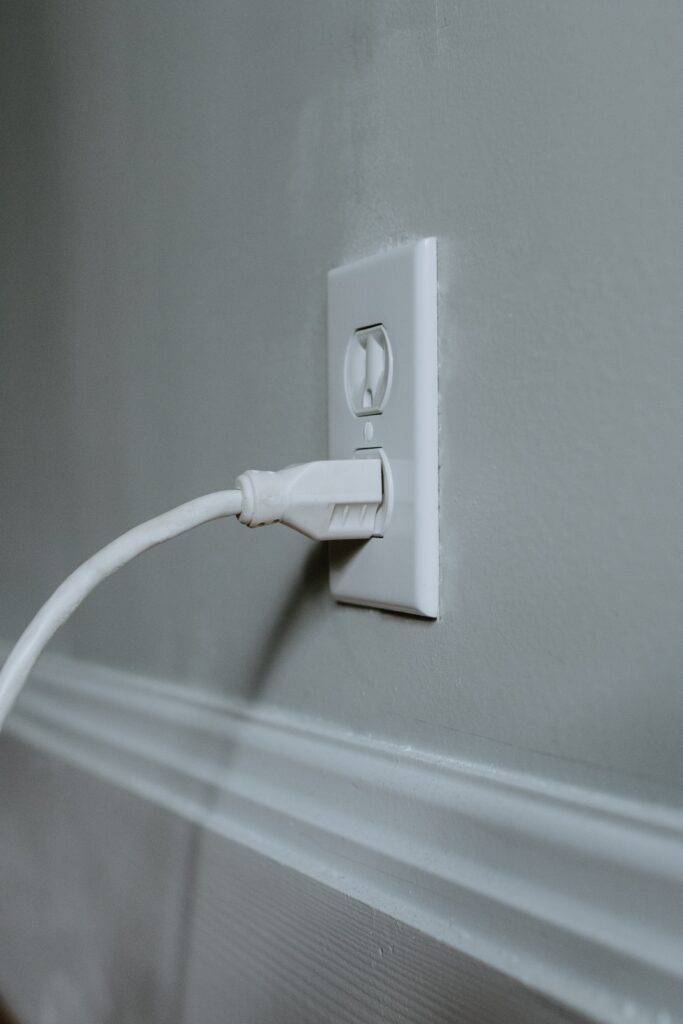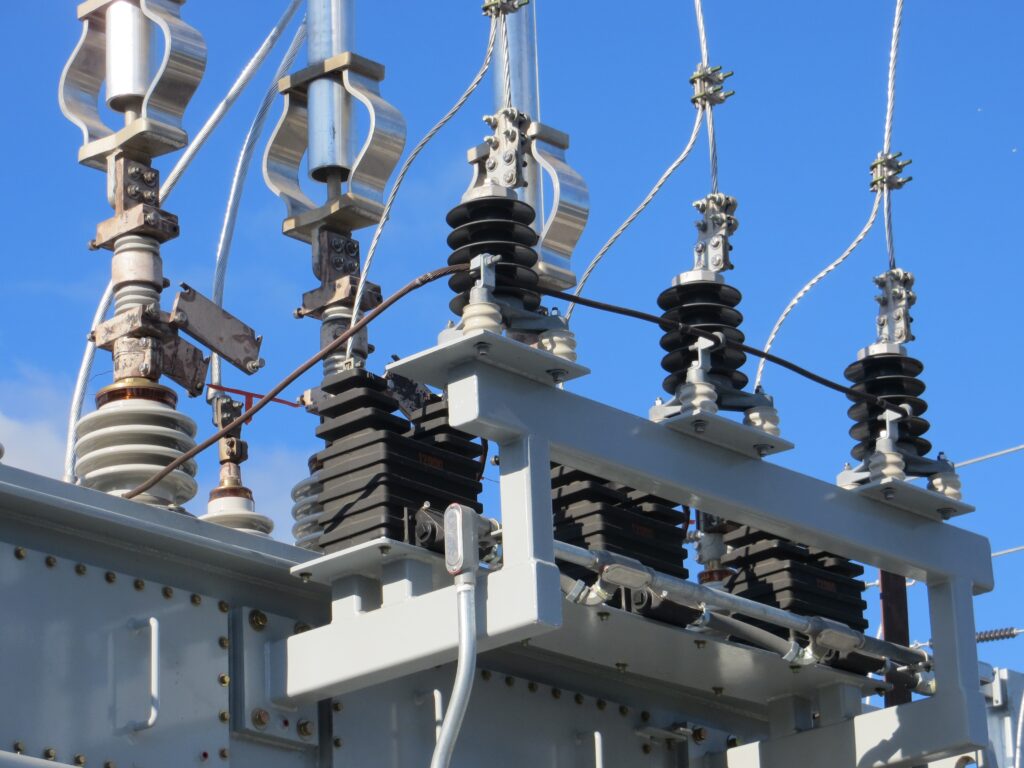Imagine being able to enjoy the comfort of air conditioning in the great outdoors without relying on a traditional electrical power source. With the increasing popularity of portable solar generators, the idea of powering an air conditioner using renewable energy seems within reach. But can it really be done? In this article, we will explore the feasibility of powering an air conditioner with a portable solar generator and discuss the potential benefits and limitations of this innovative solution. So, grab a cold drink, sit back, and let’s find out if your next outdoor adventure can be made even cooler with solar energy!
Understanding Solar Generators
What are Solar Generators?
Solar generators are devices that harness the sun’s energy and convert it into electricity. They are an eco-friendly and sustainable alternative to traditional generators that rely on fossil fuels. Solar generators consist of solar panels, a battery or energy storage system, and an inverter that converts the DC (direct current) electricity generated by the solar panels into AC (alternating current) electricity that can be used to power various devices and appliances.
Types of Solar Generators
There are two main types of solar generators: grid-tied and portable. Grid-tied solar generators are connected to the electrical grid and can feed excess electricity back into the grid, allowing homeowners to offset their energy consumption and even earn credits. On the other hand, portable solar generators are designed to be easily transported and used in remote locations or during power outages. They typically come in a compact size and can be carried by hand or with the help of a cart.
How do Solar Generators Work?
solar generators work by capturing sunlight through solar panels, which are made up of photovoltaic (PV) cells. These cells contain layers of semiconductor material that generate an electric current when exposed to sunlight. The solar panels convert the sunlight into DC electricity, which is then stored in a battery or energy storage system. The inverter then converts the DC electricity into AC electricity, which can be used to power a wide range of devices and appliances.
Features of Portable Solar Generators
Size and Portability
One of the key features of portable solar generators is their compact size and ease of transportation. They are designed to be lightweight and portable, making them ideal for outdoor activities such as camping, hiking, or RV trips. Portable solar generators are often equipped with handles or wheels for easy maneuverability, allowing you to take them wherever you go and set them up quickly and effortlessly.
Energy Storage Capacity
The energy storage capacity of a portable solar generator determines how long it can provide power without needing to recharge. It is usually measured in watt-hours (Wh) or kilowatt-hours (kWh). The larger the energy storage capacity, the longer the generator can power your devices and appliances. When considering a portable solar generator, it is important to assess your energy needs and choose one with sufficient storage capacity to meet your requirements.
Solar Panel Efficiency
Solar panel efficiency refers to the amount of sunlight a solar panel can convert into usable electricity. It is typically measured as a percentage and can vary depending on the quality and design of the solar panel. Higher efficiency solar panels can generate more electricity from the same amount of sunlight, allowing the portable solar generator to recharge faster and more effectively. It is advisable to choose a portable solar generator with high-efficiency solar panels to maximize its charging capabilities.

Understanding Air Conditioners
The Basics of Air Conditioners
Air conditioners are devices that remove heat from an enclosed space, such as a room or a building, and maintain a comfortable and cool temperature. They work by circulating refrigerant through a closed-loop system, absorbing heat from the indoor air and releasing it to the outside environment. Air conditioners are commonly used in homes, offices, and other commercial or industrial settings to provide cooling during hot weather or to regulate the indoor temperature.
Types of Air Conditioners
There are various types of air conditioners available, each suited for different applications and spaces. The most common types include window air conditioners, split air conditioners, portable air conditioners, and central air conditioning systems. Window air conditioners are installed in a window or a hole in the wall and are best suited for small or individual rooms. Split air conditioners consist of an indoor and outdoor unit connected by refrigerant lines, allowing for greater flexibility and cooling capacity. Portable air conditioners can be moved from one room to another and do not require permanent installation. Central air conditioning systems are designed to cool an entire building and consist of a centralized unit connected to a network of ducts and vents.
Energy Requirements of Air Conditioners
Air conditioners have varying energy requirements depending on their cooling capacity and efficiency. The cooling capacity is measured in British Thermal Units (BTU) and indicates the amount of heat an air conditioner can remove in an hour. The higher the BTU rating, the more powerful the air conditioner and the larger area it can cool. However, higher cooling capacities also result in higher energy consumption. Energy-efficient air conditioners, indicated by higher Seasonal Energy Efficiency Ratio (SEER) ratings, consume less electricity while still providing effective cooling. It is important to consider the energy requirements of an air conditioner when determining if a portable solar generator can power it effectively.
Can A Portable Solar Generator Power an Air Conditioner?
Preliminary Conditions
powering an air conditioner with a portable solar generator is not impossible, but it requires careful consideration of several factors. Firstly, the power output and energy storage capacity of the portable solar generator must be sufficient to meet the energy requirements of the air conditioner. In addition, the duration and frequency of use, as well as the climatic conditions of the location, must be taken into account. It is crucial to ensure that the solar generator is compatible with the air conditioner and can handle the peak power demands during startup.
Calculating Energy Requirements
To determine if a portable solar generator can power an air conditioner, you need to calculate the energy requirements of the air conditioner. Start by identifying the wattage rating of the air conditioner, which can usually be found on the manufacturer’s label or in the user manual. Multiply the wattage rating by the number of hours the air conditioner will be running to determine the total energy consumption in watt-hours (Wh). Compare this energy consumption with the energy storage capacity of the portable solar generator to determine if it can meet the demand.
Pitfalls and Challenges
There are several pitfalls and challenges to consider when attempting to power an air conditioner with a portable solar generator. Firstly, the intermittent nature of sunlight means that the solar generator may not be able to generate enough electricity to power the air conditioner continuously, especially during periods of low sunlight. Additionally, the startup power surge required by air conditioners can exceed the maximum output of the portable solar generator, causing it to shut down or fail to start. It is important to consider these limitations and make realistic expectations when using a portable solar generator to power an air conditioner.

Factors Affecting the Efficiency of a Solar Generator
Environmental Factors
The efficiency of a solar generator can be influenced by various environmental factors. The amount of sunlight available is crucial, as a higher intensity and longer duration of sunlight will result in greater electricity generation. Shading from trees, buildings, or other objects can reduce the efficiency of the solar panels by blocking or partially obstructing sunlight. Temperature also plays a role, as extreme heat can decrease the efficiency of the solar panels. It is important to consider the environmental conditions and optimize the placement and orientation of the solar panels to maximize their efficiency.
Battery Efficiency and Storage
The efficiency and storage capacity of the battery or energy storage system in a portable solar generator can impact its overall performance. A higher-efficiency battery will be able to store electricity more effectively and provide a longer-lasting power supply. It is also important to consider the battery’s charging and discharging efficiency, as well as its lifespan and maintenance requirements. Regular maintenance and proper care of the battery can help ensure its efficiency and prolong its lifespan.
Maintaining a Solar Generator
Proper maintenance of a solar generator is essential for optimal efficiency and longevity. Regular cleaning of the solar panels to remove dirt, dust, and debris can significantly improve their performance. Inspecting and tightening electrical connections, as well as checking for any signs of wear or damage, is important to prevent any power loss or potential hazards. It is also advisable to keep the battery charged and maintained according to the manufacturer’s instructions to ensure its efficiency and reliability.
Case Studies of Solar Generators Powering Air Conditioners
Real-World Examples
There have been instances where portable solar generators have successfully powered air conditioners, showcasing their potential as a viable solution. These examples often involve careful planning and consideration of the energy requirements, solar generator capacity, and climatic conditions. By selecting appropriate solar generator models and implementing energy-efficient air conditioning systems, it is possible to create sustainable and off-grid cooling solutions in specific scenarios.
Contextual Factors in the Case Studies
Contextual factors such as geographic location, climate, and the specific air conditioner model used in the case studies play a significant role in the success of powering an air conditioner with a portable solar generator. Regions with abundant sunlight and favorable climatic conditions tend to yield better results. The efficiency and power requirements of the air conditioner itself, as well as the available solar generator capacity, must also be considered. Moreover, the duration and frequency of air conditioner use, as well as the energy management strategies implemented, impact the overall performance and feasibility of the system.
Lessons Learned from the Case Studies
The case studies highlight important lessons and considerations when attempting to power air conditioners with portable solar generators. It is crucial to carefully assess the energy requirements, solar generator capacity, and climatic conditions to ensure compatibility and feasibility. Choosing energy-efficient air conditioner models and implementing energy management strategies, such as optimizing insulation and reducing unnecessary cooling demands, can significantly improve the performance and efficiency of the system. Proper maintenance and monitoring of the solar generator and air conditioner are also important to detect any issues and ensure optimal operation.

Alternative Green Energy Solutions to Power Air Conditioners
Wind Energy
Wind energy is another renewable energy source that can be harnessed to power air conditioners. Wind turbines convert the kinetic energy of the wind into electricity, which can be used directly or stored in batteries for later use. Wind energy systems can be installed on or off-grid, depending on the location and energy requirements. While wind energy may not be as widely applicable as solar energy due to geographical constraints and variable wind patterns, it can be a viable option in areas with consistently strong winds.
Hydro Energy
Hydro energy, also known as hydroelectric power, utilizes the flow of water to generate electricity. It involves harnessing the energy from flowing or falling water by directing it through turbines that drive generators. Hydro energy systems can range from small-scale micro-hydropower plants to large-scale dams and hydroelectric power stations. While hydro energy is not as portable or readily available in all locations compared to solar or wind energy, it can be an effective and reliable option for powering air conditioners in areas with suitable water resources.
Geothermal Energy
Geothermal energy utilizes the heat stored within the Earth to generate electricity. It involves tapping into underground reservoirs of hot water and steam and using them to drive turbines connected to generators. Geothermal energy systems are usually installed on a larger scale and require specific geological conditions to be viable. While geothermal power may not be feasible for individual portable solar generator applications, it can be an attractive option for larger buildings or districts with a constant need for air conditioning.
Advantages of Using Solar Generators for Air Conditioners
Environmental Benefits
Using solar generators to power air conditioners offers numerous environmental benefits. Solar energy is clean and renewable, generating electricity without producing harmful emissions or contributing to air pollution. By relying on solar power instead of fossil fuels, the carbon footprint and environmental impact associated with conventional energy sources can be significantly reduced. Utilizing solar energy for air conditioning helps mitigate climate change and promotes a sustainable and eco-friendly approach to cooling.
Cost Savings in the Long Run
While the initial investment in a portable solar generator may be higher compared to traditional generators or methods of powering air conditioners, the long-term cost savings can outweigh the upfront costs. Solar energy is essentially free once the solar panels and associated equipment are installed, as it relies on harnessing sunlight rather than purchasing fuel or electricity. By reducing or eliminating the dependence on the grid, solar generators can lead to substantial savings on electricity bills, especially in areas with high electricity rates or during extended periods of air conditioner use.
Energy Independence
Using a portable solar generator to power an air conditioner offers energy independence and flexibility. It allows you to generate your own electricity wherever you are, whether it is in a remote camping location, during power outages, or in off-grid situations. This independence from the electrical grid provides peace of mind and the ability to have reliable cooling without relying on external power sources. Solar generators also offer flexibility in terms of mobility, as they can easily be transported and used in various settings, making them a versatile solution for air conditioning needs.
Disadvantages of Using Solar Generators for Air Conditioners
Initial Investment Costs
One of the main disadvantages of using solar generators to power air conditioners is the initial investment cost. Portable solar generators with sufficient capacity to power an air conditioner can be more expensive compared to traditional generators. The cost of high-quality solar panels, energy storage systems, and inverters can add up, making it a significant upfront investment. However, it is important to consider the long-term cost savings and environmental benefits that solar power offers, as well as any available tax credits or incentives that can offset the initial costs.
Reliability of Sunlight Availability
The reliability of sunlight availability is another challenge when relying on solar generators to power air conditioners. Solar energy is dependent on sunlight, which means that the generation of electricity can be affected by factors such as weather conditions, seasonal variations, and daily sun exposure. In regions with limited sunlight or frequent cloudy days, the output of the solar panels may be reduced, affecting the ability to power the air conditioner consistently. It is essential to consider the local climate and assess the suitability and reliability of solar power in the given location.
Limitations in Energy Storage
Portable solar generators are equipped with energy storage systems, usually in the form of batteries, to store the electricity generated by the solar panels. These batteries have a limited capacity and can only store a certain amount of energy. If the energy demand exceeds the storage capacity of the generator, it may not be able to power the air conditioner for an extended period of time without recharging. Managing and optimizing energy usage, as well as considering backup power options or alternative cooling methods during periods of low solar energy availability, is crucial to overcome this limitation.
Practical Tips for Using Solar Generators to Power Air Conditioners
Choosing the Right Solar Generator
When selecting a solar generator to power an air conditioner, it is important to assess your specific energy requirements and choose a model that matches or exceeds those needs. Consider factors such as the air conditioner’s wattage rating, the expected duration of use, and any additional power demands. Opt for a portable solar generator with a sufficient energy storage capacity and efficient solar panels to ensure optimal performance. It is also advisable to read reviews, consult with experts, and compare different models to make an informed decision.
Negotiating the Initial Investment
The initial investment cost of a portable solar generator can be a barrier for some individuals. However, it is worth exploring any available tax credits, rebates, or incentives that can help offset the cost. Many governments and utility companies offer financial incentives to promote the use of renewable energy sources, including solar power. Additionally, negotiating with solar installers or suppliers for competitive prices, financing options, or warranty terms can help make the initial investment more affordable.
Maintaining the Solar Generator and Air Conditioner
Proper maintenance is essential for the longevity and efficient operation of both the solar generator and the air conditioner. Regularly inspect and clean the solar panels to remove any dirt, dust, or debris that may block sunlight. Check the connections and wirings for any signs of wear or damage and tighten them if necessary. Follow the manufacturer’s instructions for battery maintenance, such as proper charging and discharging practices. Similarly, ensure that the air conditioner is well-maintained, cleaned, and serviced regularly to optimize its performance and energy efficiency.
In conclusion, while it is possible to power an air conditioner with a portable solar generator, it requires careful consideration of various factors. Understanding the basics of solar generators, assessing energy requirements, and calculating the solar generator’s capacity are important steps in determining feasibility. Environmental factors, battery efficiency and storage, as well as proper maintenance, can impact the efficiency of a solar generator. By reviewing case studies, exploring alternative green energy solutions, and considering the advantages and disadvantages, individuals can make informed decisions about using solar generators for air conditioning. With the right solar generator, proper planning, and maintenance, it is possible to enjoy sustainable and eco-friendly cooling solutions that offer cost savings and energy independence.




